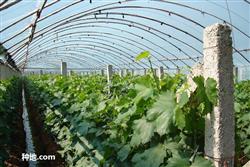Key points of high-yield management of Sakyamuni
Sakya fruit is Annona, which is a kind of hot fruit in China in recent years. Sakyamuni fruit is native to America and is now planted in tropical areas such as the south of China. Sakyamuni fruit is not only a kind of fruit with high nutritional content, but also a kind of traditional Chinese medicine with medicinal value. There are more and more people growing Sakyamuni fruit, so how to manage it in the planting process to achieve high yield? The following editor brings you the key points of Sakyamoto's high-yield management. Let's take a look at it.

1. Planting conditions
Sakyamuni fruit is a kind of tropical fruit, which likes temperature and humidity. The growth temperature of Sakyamuni fruit should be controlled at about 22 degrees. And a large amount of water is needed in the planting process, and the air humidity content should not be less than 70%. If you want to grow high-yielding Sakyamuni fruit, you need to control the growth environment of Sakyamuni fruit, let the growth of Sakyamuni fruit have sufficient nutrient water, enhance the growth of Sakyamuni fruit trees, and improve the fruit-setting rate of Sakyamuni fruit. And it is necessary to do a good job in orchard drainage and irrigation and establish good wind protection equipment.
2. Rational raising of seedlings
Before sowing and raising seedlings, seed drying and seed mixing should be carried out to improve the germination rate of seeds, and the nursery bed should choose the place facing the sun and leeward as far as possible. Before planting, the soil is ploughed and exposed, then sufficient base fertilizer is applied, it is fully mixed with the soil, and then the furrows are trimmed. Cover the fine soil film in time after sowing and water it in time after compaction. Sakyamuni seeds like water but are afraid of stagnant water, so we should pay attention to controlling moisture in the process of raising seedlings. Prevent too much water from causing root rot and too little to reduce the germination rate. And uncover the plastic film after the seedlings are unearthed to prevent the seedlings from being pressed.
3. Timely planting
The planting time of Sakyamuni fruit is usually around the Beginning of Spring every year, and it can be advanced appropriately in the tropics. If planting in the greenhouse, it can be delayed before and after Ching Ming Festival. Because the temperature has gradually picked up at this time, it is very beneficial to the growth of Sakyamuni fruit. Trees should be trimmed and disinfected before planting, and healthy seedlings with no disease, harmless and no obvious wounds should be selected as colonized seedlings. If there is not enough nutrient water, the root should be soaked in water for about 4 hours before planting.
4. Flower and fruit management
In order to increase the yield of Sakyamuni fruit and achieve the goal of high yield, artificial pollination is needed during the flowering period of Sakyamuni fruit. Because the success rate of natural pollination of Sakyamuni fruit is not high, the amount of hanging fruit is less. In artificial pollination, you can use brush and other things to dip pollen to the female flower. When starting to hang the fruit, check the fruit regularly and find that there are abnormal shape, diseased fruit and thin fruit and other fruits should be removed in time. And bagging should be done well to prevent the interference of birds and insects, reduce the incidence and enhance the quality of fruit.
The above is a brief introduction to the key points of high-yield management of Sakyamuni fruit. If you want to plant high-yielding Sakyamuni fruit, you must do all the orchard management work well. It should be noted that Sakya fruit is very sensitive to temperature changes, so it is basically impossible to see Sakya fruit trees in the north. That's all for today's introduction. This article is for reference only. Thank you for your reading and support.
- Prev

How to use drip irrigation in greenhouse vineyard?
How to use drip irrigation in greenhouse vineyard? Drip irrigation is the most ideal technology for grape irrigation in greenhouse. It has the advantages of water saving, increasing production, cooling, labor saving and high efficiency. First, simple drip irrigation production: build a storage tank with a capacity of 3-5 cubic meters and a height of 1-3 meters at the head of the shed, and install gate valves and gate valves at the outlet of the pool.
- Next

How to manage raspberry planting
How to manage raspberry planting
Related
- Moge, come on! The staff of the peasant association in the producing area of cantaloupe were frightened when the crowd gathered.
- Causes and Solutions of low Fruit setting rate of Apple
- Symptoms and control measures of passion fruit virus disease
- Fruit growing lesson: how do apple orchards keep high yields?
- Can you build orchards in the mountains? What are the pros and cons?
- How to manage the coloring period of Crisson grape?
- This paper introduces the processing technology of two kinds of fig products.
- How much is a month for retired teachers in rural areas by 2020?
- How can strawberry planting increase sugar content? We should pay attention to management in many aspects.
- What are the cultivation techniques on how to improve the yield of golden fruit?

